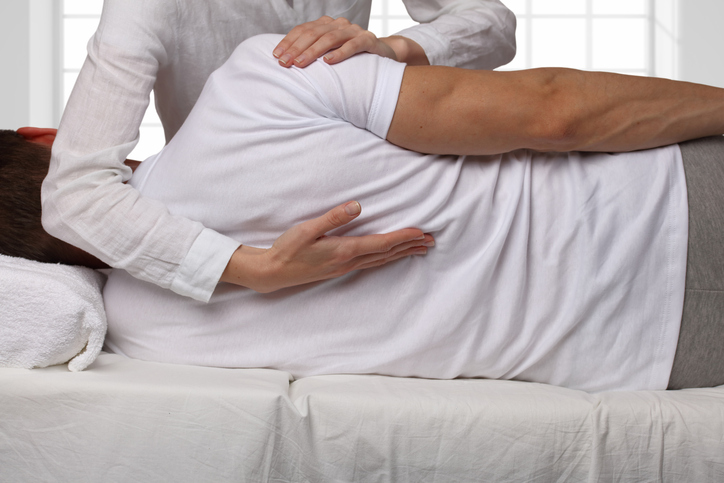Treatments
What Is Nonsurgical Spinal Decompression Therapy?

Nonsurgical spinal decompression therapy involves intermittently stretching and relaxing the spine to help relieve back pain. A motorized traction table is used to alleviate pressure on the spine by creating negative pressure within the spinal discs (the cushions between the vertebrae that keep the back pliable and enable the body to bend, twist, and carry weight).
The goal of spinal decompression is to relieve pressure from the spinal nerves and other spinal structures by causing the retraction or repositioning of herniated or bulging disc material. Spinal decompression therapy also promotes the passage of healing nutrients (oxygen, water, and nutrient-rich fluids) into the discs to promote healing and reduce inflammation. It’s important to note that more research is needed to determine the effectiveness and safety of spinal decompression therapy.
What does a spinal decompression therapy session involve?
During a spinal decompression therapy session, the individual lies fully clothed on a computer-operated table. They are asked to lay either face-up or face-down while two harnesses are placed around their body: one near the hips and the other at the feet. The table is operated by a health care professional. During therapy, the upper part of the table stays in a fixed position while the lower part slides back and forth to provide traction and relaxation. Individuals should only feel a gentle stretch, not pain, throughout their spine during the procedure. Approximately 20 to 28 treatments over a period of five to seven weeks are typically required for maximum results.
Who is a good candidate for spinal decompression therapy?
Individuals with the following conditions may benefit from spinal decompression:
- Neck pain, back pain, or sciatica
- Injured or diseased spinal nerve roots
- Posterior facet syndrome (worn spinal joints)
- Bulging or herniated discs
- Degenerative disc disease
Who is NOT a good candidate for spinal decompression therapy?
Not everyone with back pain is a good candidate for spinal decompression therapy, including the following:
- Pregnant women
- Those with a spinal fracture
- Those who have had a spinal fusion
- Those with failed back surgery syndrome
- Those with an artificial discs or implants in the spine
- Those who have had multiple surgeries without proper recovery or improvement in pain
- Those who experience increased pain during or after nonsurgical spinal decompression
Individuals with the following medical conditions are also not good candidates for spinal decompression therapy:
- Spinal stenosis
- Spinal tumor or infection
- Abdominal aortic aneurysm
- Spondylolisthesis
- Osteoporosis
- Ankylosing spondylitis Any condition that may compromise the structure of the spine or that requires the use of blood thinners
What other forms of treatment may be used with spinal decompression therapy?
Health care professionals may also incorporate other forms of treatment into spinal decompression therapy sessions — either before or after the procedure — including temperature therapy , therapeutic ultrasound, or transcutaneous electrical nerve stimulation (TENS) therapy.


















